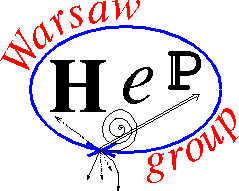SEMINARIUM FIZYKI WIELKICH ENERGII
Dnia 31 marca (piątek) o godzinie 10:15, w sali B2.38 odbędzie się seminarium, na którym zostanie wygłoszony referat pt.:
„Measurements of CP-violating asymmetries in charm decays in the charmingly-beauty experiment – LHCb”
Referuje: dr hab. Artur Ukleja (NCBJ), prof. AGH
mgr Jakub Ryżka (AGH)
One the main goal of High Energy Physics is a search for physics beyond the Standard Model (called new physics). The measurements of CP-violating asymmetries in particle decays containing a charm quark create perfect environment for the new physics searches since the background from the Standard Model is small as the expected value of CP violation is about a few per milles or less. It is significantly smaller then observed in beauty sector. The LHCb experiment tests the Standard Model predictions in very precise measurements of CP violation using very sophisticated research methods. For example, finding disagreement between measured and predicted values will be indirect indication of the existence of new physics.
So far, in the charm sector, CP violation is confirmed as a nonzero difference between two CP-violating asymmetries in D^0 to K^- K^+ and D^0 to pi^- pi^+ decays. This result obtained in 2019 only raised the question of whether the observed difference reflects the CP violation in the D0 meson decays into a pair of kaons, into a pair of pions, or both. Possible interpretations will be discussed during the seminar. Recently, the LHCb experiment has measured the direct CP asymmetries separately for the two decay modes: D^0 to K^- K^+ and D^0 to pi^- pi^+. These results will be presented during the seminar as them constitute the first evidence for CP violation in a specific charm hadron decay. The compatibility with the hypothesis of CP symmetry is 3.8 standard deviations.
The new searches for CP asymmetries in three-body charm baryon decays will be also presented. Three-body processes are always more rare than the two-body processes, but they can provide much more information about CP violation. Many observables are available to measure in multi-body processes. In contrast, in two-body processes, only one variable is measured (global result of CP violation). So far, in charm baryons the level of 2.7 standard deviations of agreement with CP symmetry was measured. The new approaches will be discussed during seminar as well as their tests obtaining in control decays.
Serdecznie zapraszamy
dr hab. Katarzyna Grzelak
prof. dr hab. Jan Królikowski
prof. dr hab. Aleksander Filip Żarnecki

